Sounds Amazing! Healing with Horses, Sound and Music
Exploring equine-assisted and sound therapy
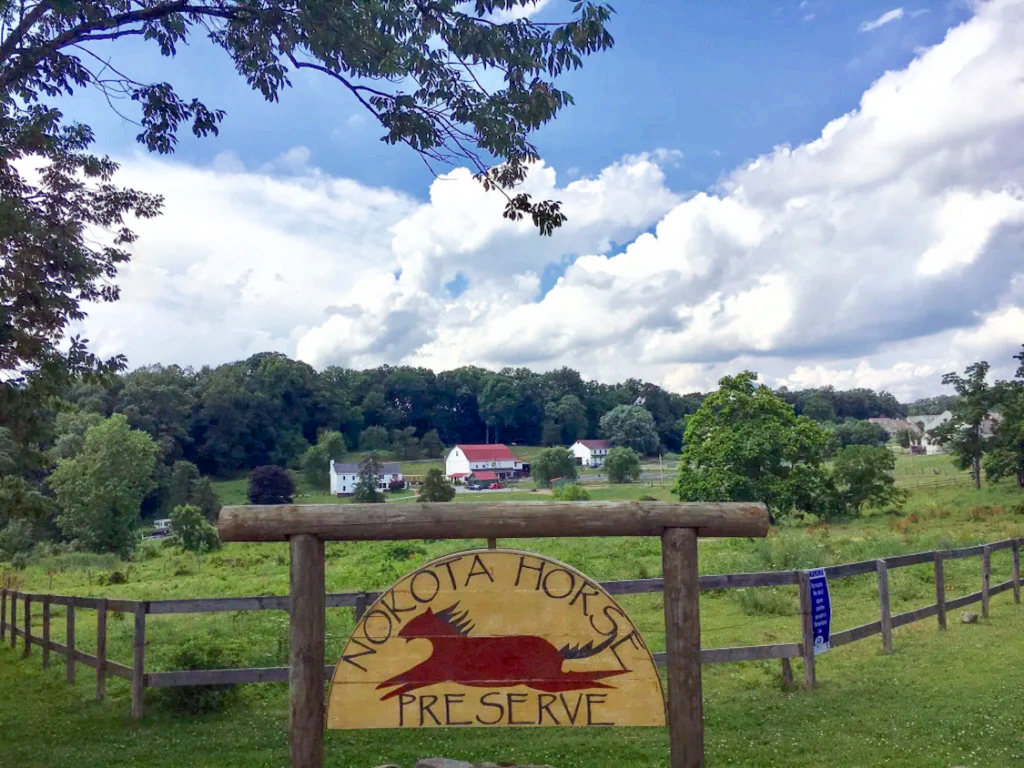
Pointy ears twitch at the beat of a drum at a preserve in Chester Springs. At a farm in West Chester, a velvety nose gently dips into a crystal singing bowl, sending a soft chime floating across the field. Elsewhere, a miniature horse named Boone sticks his head — and part of his punk rocker-style mane — between fence rails to check out a tongue drum delivering mellow tunes into his paddock.
Horses have shared humans’ world of music for centuries. Ancient art in China, Italy and Greece depicts horses dancing to trumpets and drums. Italian Renaissance horse parades, choreographed to music, inspired the invention of the steam-driven carousel in England during the late 1800s. A century later, the Olympics added music to equestrian dressage events.
Today in Chester County, collaborations of equine-assisted and sound therapies are at play for wellness.
Drumbeats, Hoofbeats and Heartbeats
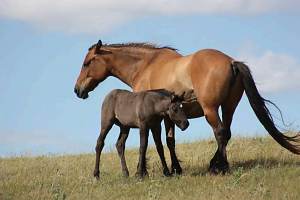 Part of the mission of a bucolic farm in Chester Springs — The Nokota Preserve — is to share the joy of Nokota horses along with information about the horses’ role in the expanding field of therapeutic horse work. Nokotas are the feral descendants of Sitting Bull’s horses from the North Dakota Badlands. Exceptionally strong, resilient, intelligent and committed to the survival of their herd, the horses that were once referred to by the Lakotas as their brothers and sisters are also extraordinary healers for horses and people.
Part of the mission of a bucolic farm in Chester Springs — The Nokota Preserve — is to share the joy of Nokota horses along with information about the horses’ role in the expanding field of therapeutic horse work. Nokotas are the feral descendants of Sitting Bull’s horses from the North Dakota Badlands. Exceptionally strong, resilient, intelligent and committed to the survival of their herd, the horses that were once referred to by the Lakotas as their brothers and sisters are also extraordinary healers for horses and people.
Christine McGowan, equine specialist heading the Nokota Preserve, said she’s observed domesticated horses with painful injuries, depression and disconnection recover under the care of a feral herd. Ostensibly programmed not to abandon a member of the herd but to bring it back to health, the Nokotas connect with their fellow equines through a silent, seemingly magical language that possesses rare healing powers, she said. As a herd lives in the wild, free to sleep and move together outdoors, they facilitate restoration of natural rhythms that are in tune with nature — footfall on the ground, two or 20 horses’ synchronized movements across a field and life within changing seasons. Horses destined for rehab or retirement end up jumping again and reengaging with life.
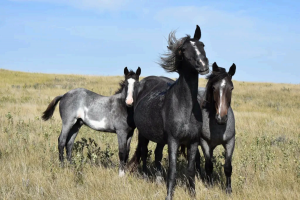 People can also tap into the world of the Nokotas for wellness. Beating handheld drums — an activity that can enhance focus and motor coordination, according to research — participants of drum circles this past fall sought to connect with the small local herd through the common language of rhythm. In unison, they echoed the patterns of heartbeats and hoofbeats. The human group appeared to become accepted by the horses as a subset of their herd, allowed to stand next to them as they ate and to closely observe their beautiful eyes.
People can also tap into the world of the Nokotas for wellness. Beating handheld drums — an activity that can enhance focus and motor coordination, according to research — participants of drum circles this past fall sought to connect with the small local herd through the common language of rhythm. In unison, they echoed the patterns of heartbeats and hoofbeats. The human group appeared to become accepted by the horses as a subset of their herd, allowed to stand next to them as they ate and to closely observe their beautiful eyes.
Robin Nelson-Woodward, board member of the Nokota Preserve, said she believes that deep down, the horses remember the drumbeats, chanting and dancing that their ancestors experienced. Because such sounds resonate with them, they are a way for people to communicate with the horses.
Healing with Horses and Harmony
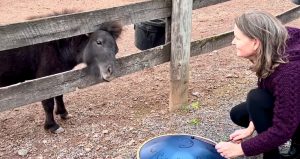
Many equestrians have sensed for a long time that horses and humans mirror each other’s emotions. McGowan pointed to recent findings from the HeartMath Institute indicating that human hearts and the calm heartbeats in a herd of horses will synchronize. So, for a person whose heart rate and anxiety are running high because of trauma, synchronizing with a slower equine heartbeat has the effect of instilling tranquility.
A collaboration of Chester County’s Kellie Lynch, equine therapist at Stewarding Connections, and Carol Metzker, sound practitioner at Sound and Wellness, led to sound baths for people and horses together at Allerton Farm last summer. Listening to lyrical crystal singing bowls — found to calm brain waves — and evening birdsongs in the field at sunset, human participants reported a feeling of “serenity” they had not experienced for a long time.
Horses in a field across a lane came closer to the music source and the group. A deer on a nearby hill bounded closer and observed.
At another session, a survivor of human trafficking said her feelings of awe and connection were “almost magical.”
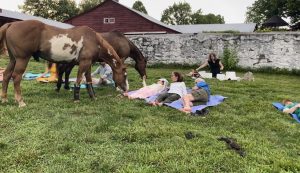
Special equine observers at Allerton Farm reported that the horses, too, experienced great calm and a sense of curiosity about the people and singing bowls that had temporarily joined their herd.
Perhaps most amazing about the power of the sounds, combined therapies, and healing presence and quiet wisdom of the horses is not the measure of what is observed, but what is felt: the reassuring sense of belonging shared by two- and four-footed partners together.
Fall in love with the Nokotas through the lens and story arc of Sabina Louis Pierce, a National Geographic Explorer. Learn more about “Saving the Nokotas” at SabinaLouisePierce.com/About.
Curious? Explore More
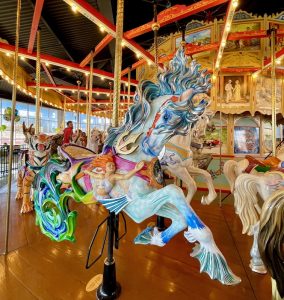
With the Brandywine Valley’s rich trove of equestrians, horses and farms, there’s a wide variety of therapeutic programs with different offerings for mental, physical and emotional wellness: spending time with horses, collaborative sound baths, riding and more.
In addition to Stewarding Connections, Allerton Farm and the Nokota Preserve, check out offerings at Locust Lane Riding Center in Coatesville, Thorncroft Equestrian Center in Malvern, Hope Springs Equestrian Therapy in Chester Springs and Harmony Hollow Equine in Quarryville.
Can’t make it out to the paddock? For fun, take a whimsical whirl on a horse — or zebra or tiger — at the gorgeous, restored historic carousel in Pottstown. Ride the doubledecker Island Carousel inside the Plymouth Meeting Mall or hop on other animals for a spin on Elmwood Park Zoo’s carousel in Norristown.
